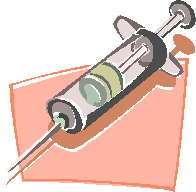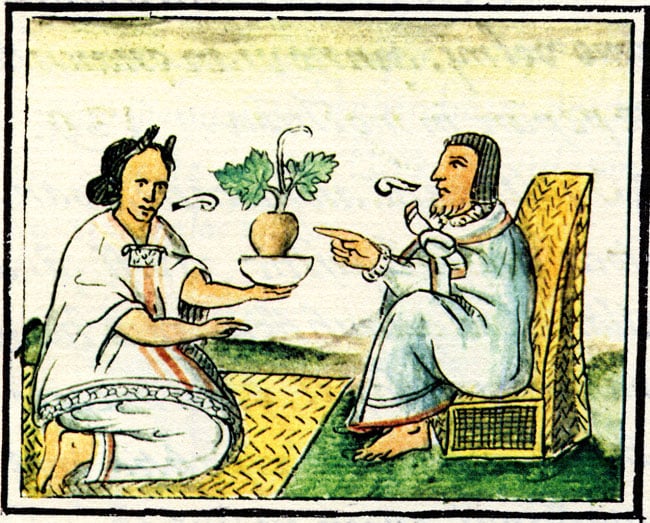The year 2008 was a tumultuous one in the world of Thoroughbred horse racing. The tragic death of the filly “Eight Bells,” at the end of the Kentucky

Eight Belles was buried and memorialized in the garden of Churchill Downs' Kentucky Derby Museum on September 7, 2008
Derby, and the failure of “Big Brown” to win the Triple Crown, put the spotlight on racing horses, and the things that are done to and for them. The newspapers rang with stories of anabolic steroid use, and many other drugs. People started to ask, “What’s going on?”
Race horses perform at the limits of their physical capabilities. At the end of a long race, the heart is pounding, the lungs may be bleeding, and the muscles are exhausted. The horses have been asked to run until they almost literally cannot run anymore. And, they’ve been asked to do this because people enjoy the awe inspiring sight.
But it’s more than enjoyment. Horse racing is big business. It’s a huge industry, one that employs jockeys, trainers, farriers, and veterinarians. There’s the breeding of mares and syndicating horses to stud and sales: billions of dollars worth of business. And, of course, there’s the pari-mutuel betting industry, involving many more billions.
The reward of having a successful racing horse is great. Great racehorses can win millions in purses. Retired to stud, successful stallions are worth many millions of dollars more. The progeny of such horses routinely sell for additional millions.
The risk, however, is also great. The chances of an individual horse making it to the top are remote. The chance of injury looms large. A large expenditure of money is assured, no matter what the result.
So, it is perhaps inevitable that people will do what they can in an effort to reach the top of the horse racing business. To some, the reward is worth almost any expenditure, and any risk, even risk to the horse’s health. As a result, what they do is coming under increasing scrutiny. A 2008 Congressional investigation highlighted some of the practices of the industry, and, in 2010, US Senator Thomas Udall, and Representative Ed Whitfield sent inquiries to the racing industry organizations to determine basically (1) the adequacy of guidelines for use of medications and drugs, (2) the states or racing commissions and tracks that follow Racing Commissioners International (RCI) rules and Racing Medication and Testing Consortium (RMTC) recommendations; (3) any penalties and enforcement; (4) injuries suffered by horses, and collection of information about injuries and death.
For a long time, horses have been given substances such as anabolic steroids to improve performance (they don’t), or furosemide to stop lung bleeding (it  helps do that, and it also seems to help speed horses up), joint injections for joint soreness (real or perceived), or “milkshakes” of sodium bicarbonate to help delay muscle fatigue (it may help some, but it can have fatal results). And while those practices have long been out of the public eye, and considered part of the cost of doing business by those involved in the racing industry, there is now concern being expressed by those outside of the industry (CLICK HERE to read about examples of abuse of steroids, as well as other drugs, in horses).
helps do that, and it also seems to help speed horses up), joint injections for joint soreness (real or perceived), or “milkshakes” of sodium bicarbonate to help delay muscle fatigue (it may help some, but it can have fatal results). And while those practices have long been out of the public eye, and considered part of the cost of doing business by those involved in the racing industry, there is now concern being expressed by those outside of the industry (CLICK HERE to read about examples of abuse of steroids, as well as other drugs, in horses).
It’s not just racing horses, either. The only federal laws relating to animal cruelty pertain to Tennessee Walking horses. It’s a federal crime to “sore” them, that is, to make their heels hurt so that they lift their feet high in the air, to assist in their dramatic gait. Some hunter and jumper show horses are regularly given joint injections, even when their joints don’t bother them, in the name of “maintenance,” even though there’s no medical reason for such a thing. And that’s not to mention stimulants and anti-inflammatory drugs and tranquilizers, to name a few. Show Quarterhorses may get their tails cut, or injected with alcohol, to give their tails the flaccid appearance that’s considered “desirable.” (CLICK HERE to read the official AQHA Policy Statement, “Welfare and the American Quarter Horse.”) Over a dozen event riders died in 2007 – 2008, and even more horses – the fences that they jump aren’t built to yield to a mistake. It makes one wonder; “Is it worth it?”
I mean, is it really necessary that horses receiving so much pharmaceutical attention to keep performing? And, if it is necessary, is it really right to make them perform if they can’t do it without drugs? Shouldn’t we be doing everything that we can to make events safe for both horses and riders?
We don’t seem to be very tolerant of human athletes who inject themselves with performance enhancing substances (see, for example, Major League Baseball, the Tour de France, the Olympics, etc.). It surely seems curious that people have we tolerated the injection of such substances into horses – who don’t know what is at stake – for so long.
There are some signs appearing that people aren’t going to be tolerating it for much longer. When Congress gets interested, people involved in the activities in which Congress is interested take notice. In 2009, the American Association of Equine Practitioners approved a “White Paper” pertaining to the welfare of Thoroughbred Racehorses (CLICK HERE to read the paper). The Fédération Equestre Internationale (FEI) has launched its “CleanSport”
initiative to address the issues of doping and inappropriate medication in high performance sport horses (CLICK HERE for the website). The welfare of the horse is becoming an issue at the forefront of discussions about the use of performance horses: in my opinion, it’s about time.
Lots of organizations and associations are asking questions about how performance horses are treated. Many people who are well-placed in equine performance industries appear to be taking heed. Above all, the welfare of the horse has to come first.








